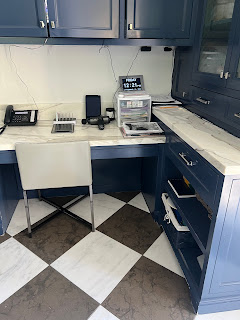Advantages of Stained Concrete Floors
Most customers today have come to appreciate the use of stained concrete floors since they offer numerous benefits, as well as the increasing economic status of most customers.
Below are some key advantages:
1. Durability and Longevity
Resistant to Wear and Tear: Concrete slabs are probably the most resistant and reliable type of flooring available today.
Stained concrete even covers the installed floors, which can easily last for decades without replacements if well-sealed and cared for.
Scratch and Impact Resistant:
These floors are suitable for areas with people since they are impervious to scratching or impact damage.
2. Low Maintenance
Easy to Clean: The most common utility mop and broom work for almost every case. With such maintenance, only periodic re-sealing is advised to prevent the finish from being compromised.
Stain Resistance: It is also typical practice to seal stained concrete floors, and for this reason, almost all spills do not tend to stain such surfaces after the floors have been sealed, making them sited in strategic locations such as kitchens, bathrooms, and any other sensitive areas.
3. Cost-Effectiveness
Affordable Installation: Admittedly, it would cost more as decorative enhancements are added, but in general, stained and plain concrete floors will still cost less than the rest, such as tiles, hardwood, carpets, etc.
Minimal Upkeep Costs: The long history and nature of maintenance mean that few repairs and fewer replacements will be needed in the future, allowing economies to be realized.
4. Redesign Flexibility
Functional and Aesthetic Appeal:
Classifying modern-age buildings relies explicitly on the coloring technique used on stained concrete. Custom looks can be created using a broad spectrum of color combinations, exquisite patterns, and texturing, if needed, all over the decoration.
Unique Design: Metal, Plywood, and Marble floors are expensive floor materials that cost a fortune to install in a house, but stained concrete enhances the beauty to such an extent that you can barely tell the difference.
5. Energy Saving
Thermal Mass: Since thermal mass entails heat absorption and retention, it is worth noting that concrete walls tend to gather heat energy during the day and disperse it during the night, contributing to effects such as moderation of indoor temperature levels.
Reflective Surfaces: Suitable hardwood and concrete stains in light colors tend to bring natural illumination to the house or workplace during the day, thus reducing the reliance on electric power.
6. Environmentally Friendly
Recyclable Material: Concrete, a green construction material, mitigates conventional injuries and illnesses from construction activities.
Staining your concrete slab rather than adding more materials, which is usually the case, reduces waste.
Non-Harmful: Most stains extract a large amount of water and incorporate polymers, making them eco-friendly compared to other floor materials.
7. Hypoallergenic
Allergen Reduction: Floors made of stained concrete never harbor dust, pollen, or pet dander like carpets do, so they are the best in allergy cases.
Allergy Sufferers/Benefit: Sufferers of chemical allergies and respiratory diseases should choose stained concrete floors over carpets.
8. Heating Suitable For Indoor And Outdoor Environments.
Indoor: Sharing the same elegant, polished surface to make constructions like holes in walls and floors. Stained concrete floors are best applied in the living room, kitchen, basement, or bathroom.
Outdoor: Concrete is also a good option for patios, driveways, and walkways, as it is the simplest to maintain and performs well in different weather conditions.
In conclusion, Stained concrete floors can withstand wear and tear without needing large-scale and frequent maintenance, making them highly favorable and cost-effective flooring solutions for residences and business premises.
These average-coated concrete floors add value to modern homes' aesthetics, and their lightness makes them easy for occupants to walk on.










